'Anything Goes'
In the early years of astronomical photograph pioneers like John William Draper, Warren De La Rue and the Bonds of Harvard, William Cranch and his son George Phillips used whatever equipment they had, no matter whether it was suitable or not.
The 'Great Refractor'
Only in 1864 did the New York amateur scientist, Lewis Morris Rutherfurd create the first Astrograph - a telescope designed specifically with photography in mind. It would be many years before photographic refractors became used in a professional observatory.
At that time the ‘Great Observatories’ were more interested in claiming the title of owner of the ‘largest’ telescope rather than caring about whether it was the best or even less whether it was photographically corrected’. This ‘blinkered’ attitude effectively meant who had the biggest ‘Great Refractor’. Its rival - the reflector was considered the instrument of amateurs and cranks, despite it having achieved great success in the hands of Sir William Herschel and his son Sir John Herschel.
Those who held the purse strings often did not care about science but only their egos; and astronomers were often only too glad to receive the gift of a ‘Great Refractor’; and besides many even up to the end of the nineteenth century were not convinced of the advantages of photography over visual observations.
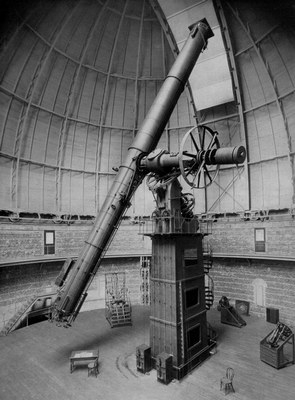
40-inch Yerkes Observatory Refractor: Photography courtesy of the University of Chicago Archives
'Aperture Fever'
As a consequence the nineteenth century was the age of the ‘Great Refractor’, many examples of which sprang up across the North American Continent and Europe, with every few years an even bigger one would appear under the Dome of this observatory or another, until it was supplanted by one elsewhere; 15-inch (1839), 18.5-inch (1862), 24.5-inch (1869), 26-inch (1873), 30-inch (1885), 30.3-inch (1887), 36-inch (1888), 40-inch (1897). It was a case of aperture fever bordering on scientific insanity. However there appeared a few voices of reason in the astronomical community who supported either the reflector which was better by design suited to photography, or the photographic refractor.
The 3rd Earl of Rosse
William Parsons, the 3rd Earl of Rosse (1800-1868) at his estate in Parsonstown (now Birr) built a series of ‘Great Reflectors’, culminating in the completion of his 72-inch ‘Leviathan’ in 1845. Using this instrument Parsons saw details in the objects known as ‘nebulae’ which the refractors could not see. In particular he observed that several exhibited a ‘spiral’ nature. Such nebulae were later to be found separate ‘Island Universes’ lying millions of light years beyond the boundaries of our own Milky Way star system.
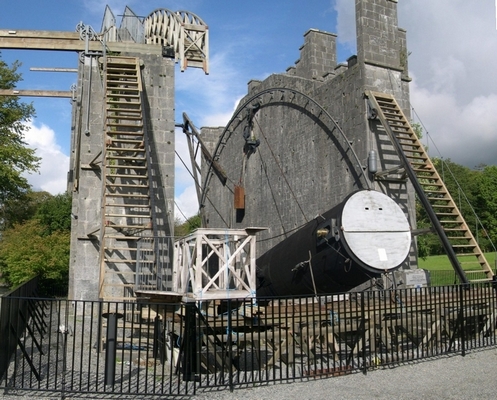
The 72-inch 'Leviathan of Parsonstown', 2009: Photograph by the Author
'Photographic Refractors'
Edward Charles Pickering, the Director of the Harvard College Observatory, went against the norm of his fellow observatory heads - and believed in small photographic refractors as the best way forward for the new science of Astrophysics. In 1885 Pickering obtained $2000 from a grant provided by the Bache Fund of the American National Academy of Sciences for the purchase an 8-inch Photographic Refractor.
It was with this instrument that his younger brother William Henry Pickering took a photographic plate on the 6th of February 1888, on which Williamina Fleming found the dark nebula known as the ‘Horsehead’ - probably the most iconic of the all the wonders to be seen in the heavens. Furthermore he used this Astrograph and others to carry out useful science in the areas of stellar spectroscopy and photographic sky surveys.
The 'Carte du Ciel' Astrographs
With the instigation of the ill-fated ‘Carte du Ciel’ photographic sky mapping project in 1887, the appearance and use of photographic refractors bred like clones across the globe from Greenwich, to Paris, to Rome, to North Africa, to Australia and to South America; all made to the same specification based on a 13-inch aperture.
The 'Crossley' Reflector
The first nails in the coffins of the ‘Great Refractors’ had begun to appear.In 1898 the nails had begun to be hammered into the coffins when, James Edward Keeler and his assistant Charles Dillon Perrine began taking photographs with a 36-inch reflector of many well known Deep Space Objects. The images they obtained were of such magnificence that they made even the most sceptical of astronomers believe that the new era of the large silvered mirrored reflector had begun and the age of the ‘Great Refractor’ had come to an end.
The Reflector Cometh
So it proved to be when in 1908 a 60-inch reflector appeared atop Mount Wilson in California, followed nine years later by an even bigger one of 100-inch aperture next to it. Following the 1900 Paris exhibition when a refractor of 49-inch aperture made a final bow before being scrapped, no more ‘Great Refractors’ were built, save the 30-inch Thaw photographic refractor completed for the Allegheny Observatory, Pittsburgh in 1914.
In the years that followed many new ‘Great Reflectors’ appeared under the domes of the world’s observatories, whose designs were based on high quality optics, entirely suited to astronomical photography. Telescopes using the Schmidt and Ritchey-Chretien optical systems also began to slowly displace the conventional Newtonian/Cassegrain designs as adopted by the 200-inch Hale reflector on Mount Palomar.
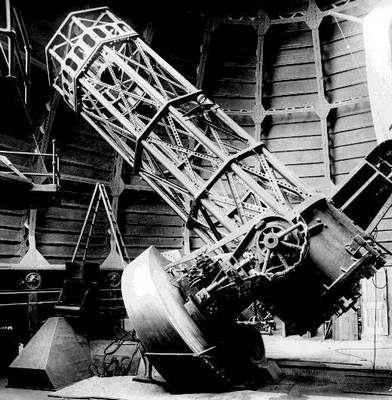
60-inch Reflector, Mount Wilson Observatory, 1908: Photograph courtesy of the Mount wilson Observatory
The 'Hubble'
On the 24th of April 1990 the ultimate Astrograph - the Hubble Space Telescope was launched into orbit above the Earth and with it a new chapter in the history of Astrophotography was opened.
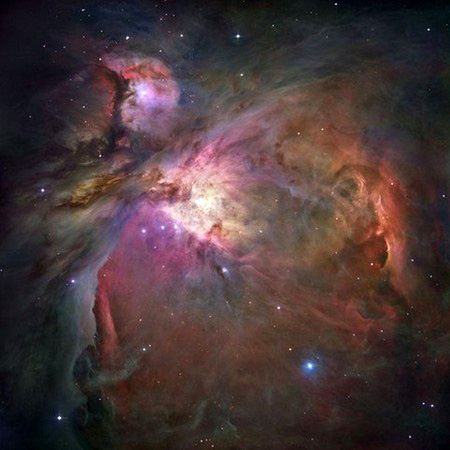
The 'Great Orion Nebula' (M42) - Hubble Space Telescope: Photograph courtesy of NASA
Quote
"But in ‘telescopic’ photography the conditions are quite different. The instrument is not designed for the purpose, and in refractors the actinic rays come to a different focus from the visual rays, so that the ground glass requires suitable adjustment. Focal lengths and apertures have to be determined, and suitable stops manufactured, by the photographer himself,and except for solar photographs, ordinary exposure tables in their usual form are useless. Fortunately, however, all the necessary information can be ascertained without difficulty..”
Henry Hayden Waters (1880-1939), from Astronomical Photography for Amateurs, 1921.
To read more on this subject read the eBook chapter on Astrographs: Photographic Astronomical Telescopes or buy the eBook 'Catchers of the Light'.
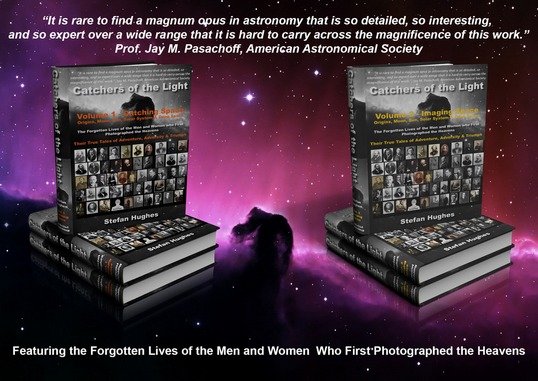
Buy the eBook or Printed Book at the 'Catchers of the Light' shop.